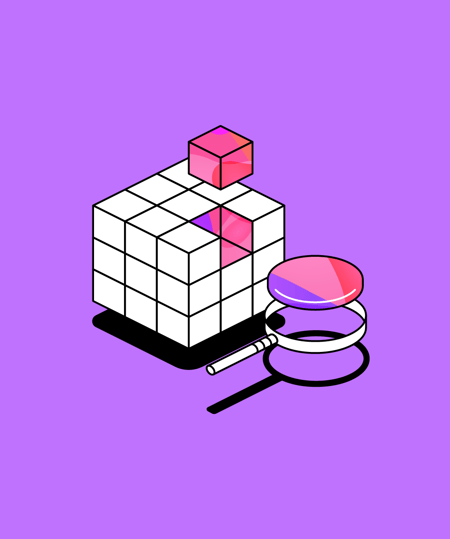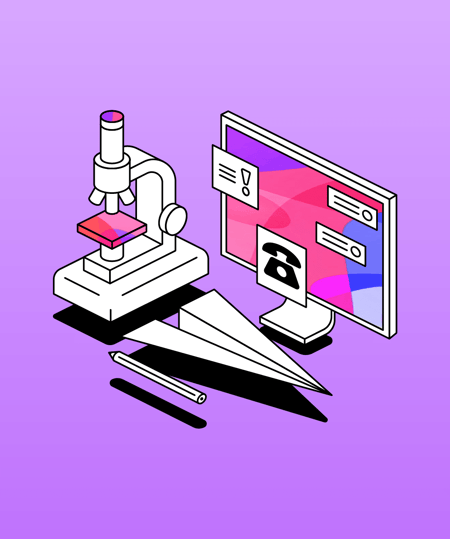Working with faculty: 6 common questions for implementing Glean in higher education
To help facilitate conversations with faculty members and allay any concerns around introducing Glean to your institution, we’ve curated six common topics of discussion alongside responses to maximise positive outcomes.
 4 min read
4 min read
 Published: 12 Apr 2024
Published: 12 Apr 2024
 Jacob Goodwin
Jacob Goodwin


When introducing a new technology such as Glean, there can occasionally be pushback from colleagues across the institution.
These are often born of a lack of specific knowledge around the software and a desire to protect the integrity of the classroom and quality of the learning experience.
To help facilitate conversations with faculty members, allay concerns and maximise positive outcomes, we’ve pulled together the following list of six common areas of pushback and provided comprehensive answers to overcome them.
How is Glean different from lecture capture or standard recording?
The learning technology space is constantly evolving, and so is Glean!
We can say with real confidence that Glean is unique in its offering as it has been designed specifically to improve learning outcomes. And it shows, 95% of students said using Glean helped improve how they learn!
Rather than focus simply on productivity and efficiency like lecture capture or standard recording, Glean requires students to be present in class, to consciously engage and to “hit record” themselves to capture the content.
Our technology is built around a learning method that scaffolds the study process, allowing users to capture everything from class, organize the information, refine it, and apply it to their studies. It’s a process built on learning best practice and years of research and feedback.
Glean is not a replacement for class, but a tool to augment learning and ensure students can learn most effectively from the material being shared.
Are faculty content ownership interests protected with Glean?
Absolutely! The legality of content captured in the platform does not change just because it's in there. So, if the content legally belonged to a faculty member before being captured in Glean, this remains the case once it’s in Glean - ownership of the content wouldn't transfer to the user or to Glean.
We make all this clear in the Service Agreement that we enter into with a user during the account sign-up process.
For users who access Glean through their organisation or institution, it's their responsibility to make sure they follow the relevant local laws and their organisation's policies when capturing data within Glean.
How are Glean using my data?
We use the data captured in our software to:
- Provide the service to the user.
- Improve the software including carrying out quality assurance checks and repairing technical issues.
- Protect against security threats and illegal activity.
- Understand how users interact with our software.
- Improve user experience.
When it comes to the use of third parties, they provide specific parts of our service, which means they need to handle personal data on our behalf.
They can only use the data for the specific purpose we allow and must always follow our instructions. As part of this, we have a Data Processing Agreement in place with every third party that we work with that handles personal data.
You can learn more here, on our security page.
Where and how is content stored?
Content created by a Glean user, like audio recordings and electronic notes, is stored locally on the user's device and then uploaded to Glean's cloud storage (hosted across Amazon Web Services (AWS) and Google Cloud platforms in UK data centers). The data is saved locally so that a user is able to record and edit their content while offline.
Providing users with the ability to work offline is critical to the design of the Glean platform; as we believe learning shouldn't be dependent on having an internet connection.
Audio data is stored encrypted at rest and is only transmitted over encrypted channels between the browser and Glean's cloud servers.
To stop recordings from being shared out of context, students are unable to export audio from Glean. As part of our onboarding process, students are also required to agree to our terms, including a fair usage policy.
We also recommended that institutions implement their own recording agreement to cover any bespoke contexts, relevant to particular schools or environments.
Will my data be used to train AI models?
We can categorically say that we don't allow third parties to train their AI models using Glean data.
See below for more information on each instance where AI is used within the Glean platform:
Transcription
The Glean software has the functionality to generate a transcript of recorded audio. This option is available to users once recording has ended.
We use a third party service provider called Deepgram to provide the transcription feature. Deepgram will only use the user's audio recording for the purpose of generating a transcript - and nothing more.
Once the transcript has been provided to the user, the copy of the audio and the related transcript will be permanently deleted from Deepgram's systems.
Live Captions
The Glean software has the functionality to generate on-screen captions in real time. Glean uses a third party provider called Deepgram to provide the Live Captions feature.
When an institution purchases Live Captions, the feature is then made available to users in their account.
If a user switches on live captions for an audio recording, a copy of the audio is sent to Deepgram who will then process the recording in order to generate the captions.
Once the captions have been provided to the user, the copy of the audio recording and the generated captions are permanently deleted from Deepgram's systems
Quiz Me
Glean's Quiz Me feature uses AI to generate multiple-choice questions based on transcribed audio recordings. When using Quiz Me, all the answers are derived from the transcript itself rather than other sources.This means that the feedback Glean is giving is based on the lecturer's content alone.
To provide this capability, we use Microsoft Azure's Open AI service. This means we can benefit from Microsoft's industry leading experience in data privacy and security.
However, the data that we give Microsoft in order to provide the Quiz me feature is NOT:
- Sent to Open AI at any time.
- Used to train Open AI’s models.
- Used to improve Microsoft services.
- Used to improve any third party's product or services.
- Used to improve the Azure Open AI model for other Glean users.
What if sensitive material is being discussed in class?
If a faculty member wishes to ask students to cease note taking because sensitive material is being discussed or shared, they may ask all their students to do this directly.
Recordings can be paused at any point and resumed at the click of a button, ensuring minimal disruption if sensitive material is being discussed.
We do not however ask students to notify others in the class (besides their instructor) that they are recording.
Sharing this information with other students in a class would result in an unnecessary public disclosure of accommodation (and thereby, disability) since, in most cases, only those with accommodations have access to Glean.
Looking for more information?
In case you’re looking for more context, or have a question we haven’t covered here, you can visit the pages below to find what you’re looking for:
More from Disability Services
View All
 4 min read
4 min read
Navigating budget restrictions: a comprehensive guide to maximizing departmental resources
Higher education professionals face increasing pressure to do more with less and maximize limited resources. In this article, we explore tips, strategies, and success stories for adopting assistive technology and effectively planning budgets.

 2 min read
2 min read
The power of inclusive language and technology
In a recent webinar, Leslie Smith, Manager of the Access Center at Volunteer State Community College, shared a powerful insight into the transformative impact of language and technology.

 3 min read
3 min read
The future of disability services in higher education
Disability services are experiencing significant change. To explore this, and how they may continue to evolve, we sat down with Christa Price, Assistive Technology Specialist at California State University, Northridge, and Aaron Holmes, Access Specialist at MiraCosta College.





